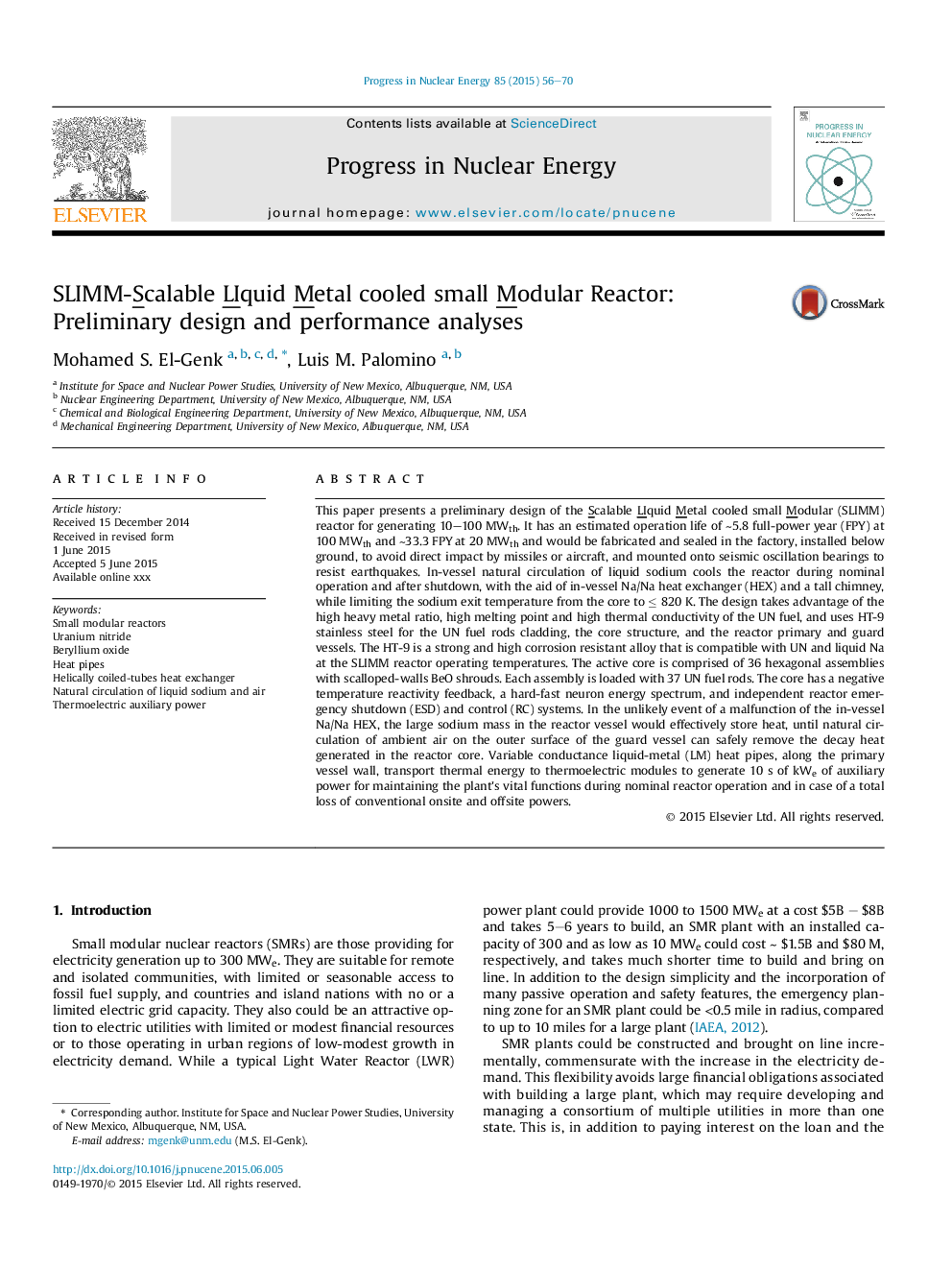| Article ID | Journal | Published Year | Pages | File Type |
|---|---|---|---|---|
| 8085078 | Progress in Nuclear Energy | 2015 | 15 Pages |
Abstract
This paper presents a preliminary design of the Scalable LIquid Metal cooled small Modular (SLIMM) reactor for generating 10-100 MWth. It has an estimated operation life of â¼5.8 full-power year (FPY) at 100 MWth and â¼33.3 FPY at 20 MWth and would be fabricated and sealed in the factory, installed below ground, to avoid direct impact by missiles or aircraft, and mounted onto seismic oscillation bearings to resist earthquakes. In-vessel natural circulation of liquid sodium cools the reactor during nominal operation and after shutdown, with the aid of in-vessel Na/Na heat exchanger (HEX) and a tall chimney, while limiting the sodium exit temperature from the core to ⤠820 K. The design takes advantage of the high heavy metal ratio, high melting point and high thermal conductivity of the UN fuel, and uses HT-9 stainless steel for the UN fuel rods cladding, the core structure, and the reactor primary and guard vessels. The HT-9 is a strong and high corrosion resistant alloy that is compatible with UN and liquid Na at the SLIMM reactor operating temperatures. The active core is comprised of 36 hexagonal assemblies with scalloped-walls BeO shrouds. Each assembly is loaded with 37 UN fuel rods. The core has a negative temperature reactivity feedback, a hard-fast neuron energy spectrum, and independent reactor emergency shutdown (ESD) and control (RC) systems. In the unlikely event of a malfunction of the in-vessel Na/Na HEX, the large sodium mass in the reactor vessel would effectively store heat, until natural circulation of ambient air on the outer surface of the guard vessel can safely remove the decay heat generated in the reactor core. Variable conductance liquid-metal (LM) heat pipes, along the primary vessel wall, transport thermal energy to thermoelectric modules to generate 10 s of kWe of auxiliary power for maintaining the plant's vital functions during nominal reactor operation and in case of a total loss of conventional onsite and offsite powers.
Related Topics
Physical Sciences and Engineering
Energy
Energy Engineering and Power Technology
Authors
Mohamed S. El-Genk, Luis M. Palomino,
